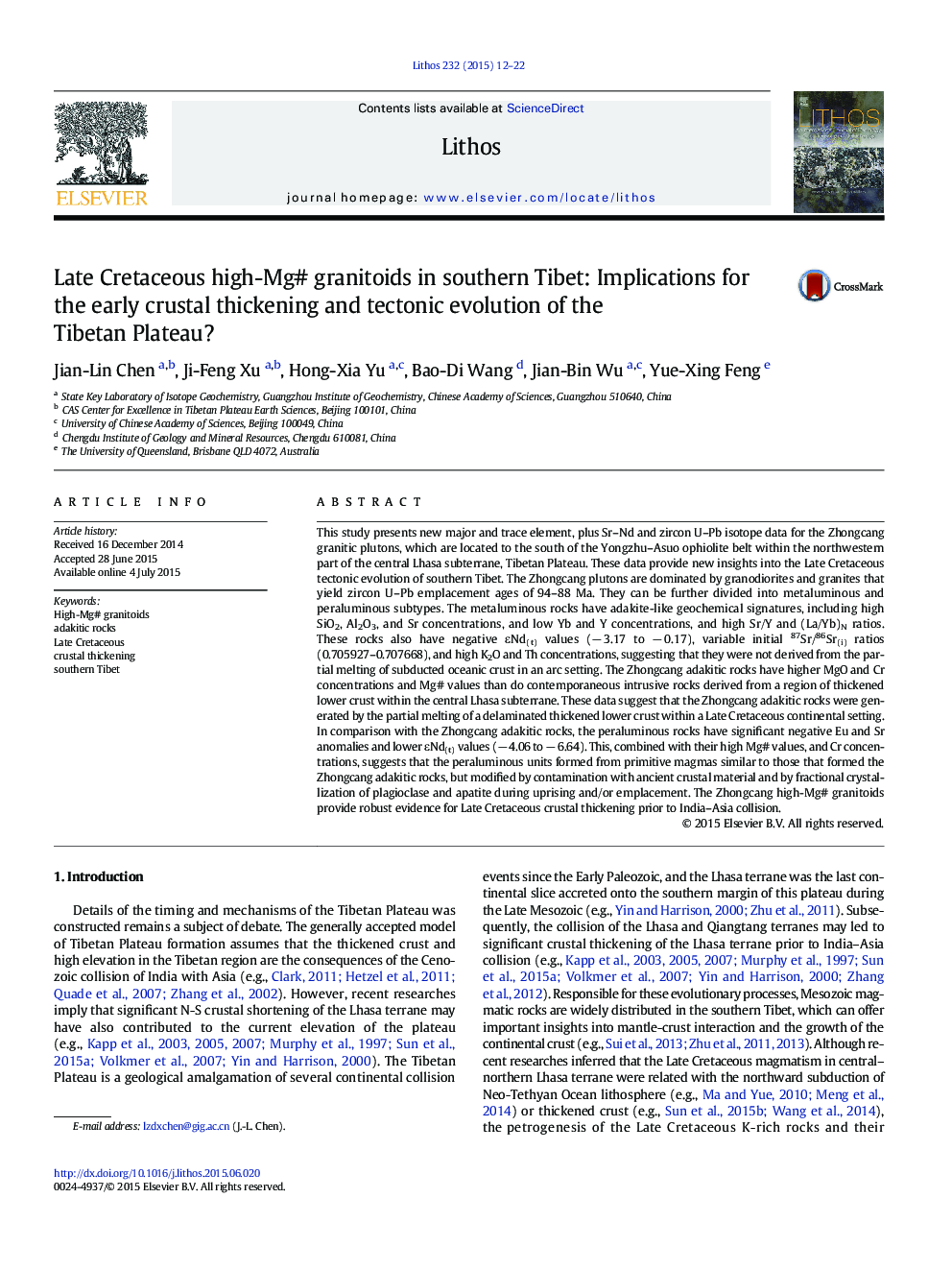| کد مقاله | کد نشریه | سال انتشار | مقاله انگلیسی | نسخه تمام متن |
|---|---|---|---|---|
| 6440654 | 1638659 | 2015 | 11 صفحه PDF | دانلود رایگان |
عنوان انگلیسی مقاله ISI
Late Cretaceous high-Mg# granitoids in southern Tibet: Implications for the early crustal thickening and tectonic evolution of the Tibetan Plateau?
دانلود مقاله + سفارش ترجمه
دانلود مقاله ISI انگلیسی
رایگان برای ایرانیان
کلمات کلیدی
موضوعات مرتبط
مهندسی و علوم پایه
علوم زمین و سیارات
ژئوشیمی و پترولوژی
پیش نمایش صفحه اول مقاله

چکیده انگلیسی
This study presents new major and trace element, plus Sr-Nd and zircon U-Pb isotope data for the Zhongcang granitic plutons, which are located to the south of the Yongzhu-Asuo ophiolite belt within the northwestern part of the central Lhasa subterrane, Tibetan Plateau. These data provide new insights into the Late Cretaceous tectonic evolution of southern Tibet. The Zhongcang plutons are dominated by granodiorites and granites that yield zircon U-Pb emplacement ages of 94-88 Ma. They can be further divided into metaluminous and peraluminous subtypes. The metaluminous rocks have adakite-like geochemical signatures, including high SiO2, Al2O3, and Sr concentrations, and low Yb and Y concentrations, and high Sr/Y and (La/Yb)N ratios. These rocks also have negative εNd(t) values (â 3.17 to â 0.17), variable initial 87Sr/86Sr(i) ratios (0.705927-0.707668), and high K2O and Th concentrations, suggesting that they were not derived from the partial melting of subducted oceanic crust in an arc setting. The Zhongcang adakitic rocks have higher MgO and Cr concentrations and Mg# values than do contemporaneous intrusive rocks derived from a region of thickened lower crust within the central Lhasa subterrane. These data suggest that the Zhongcang adakitic rocks were generated by the partial melting of a delaminated thickened lower crust within a Late Cretaceous continental setting. In comparison with the Zhongcang adakitic rocks, the peraluminous rocks have significant negative Eu and Sr anomalies and lower εNd(t) values (â 4.06 to â 6.64). This, combined with their high Mg# values, and Cr concentrations, suggests that the peraluminous units formed from primitive magmas similar to those that formed the Zhongcang adakitic rocks, but modified by contamination with ancient crustal material and by fractional crystallization of plagioclase and apatite during uprising and/or emplacement. The Zhongcang high-Mg# granitoids provide robust evidence for Late Cretaceous crustal thickening prior to India-Asia collision.
ناشر
Database: Elsevier - ScienceDirect (ساینس دایرکت)
Journal: Lithos - Volume 232, 1 September 2015, Pages 12-22
Journal: Lithos - Volume 232, 1 September 2015, Pages 12-22
نویسندگان
Jian-Lin Chen, Ji-Feng Xu, Hong-Xia Yu, Bao-Di Wang, Jian-Bin Wu, Yue-Xing Feng,